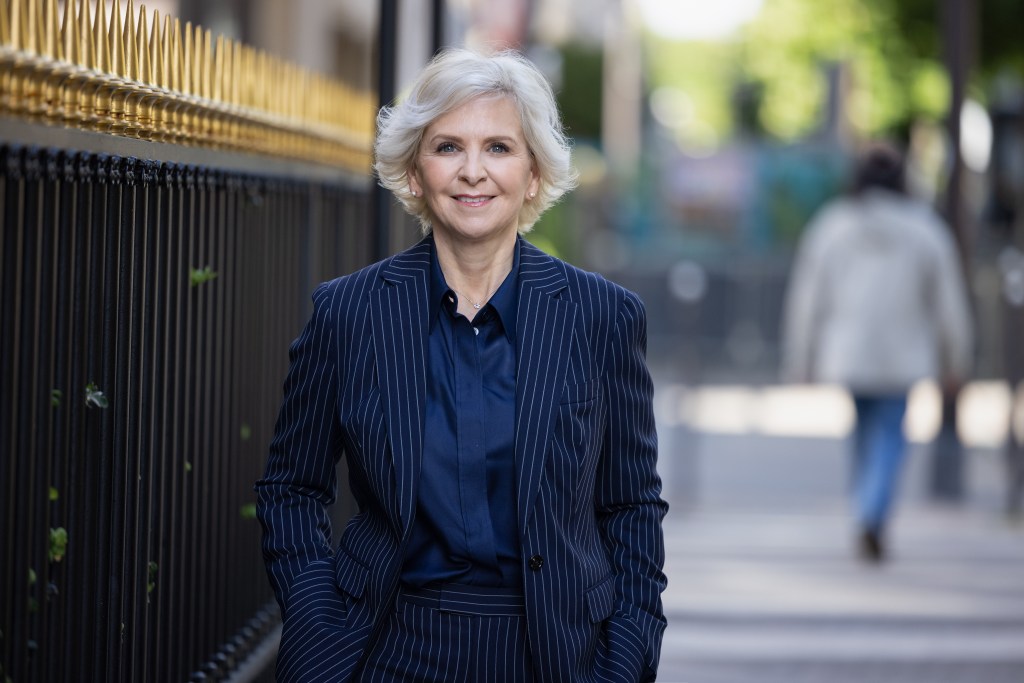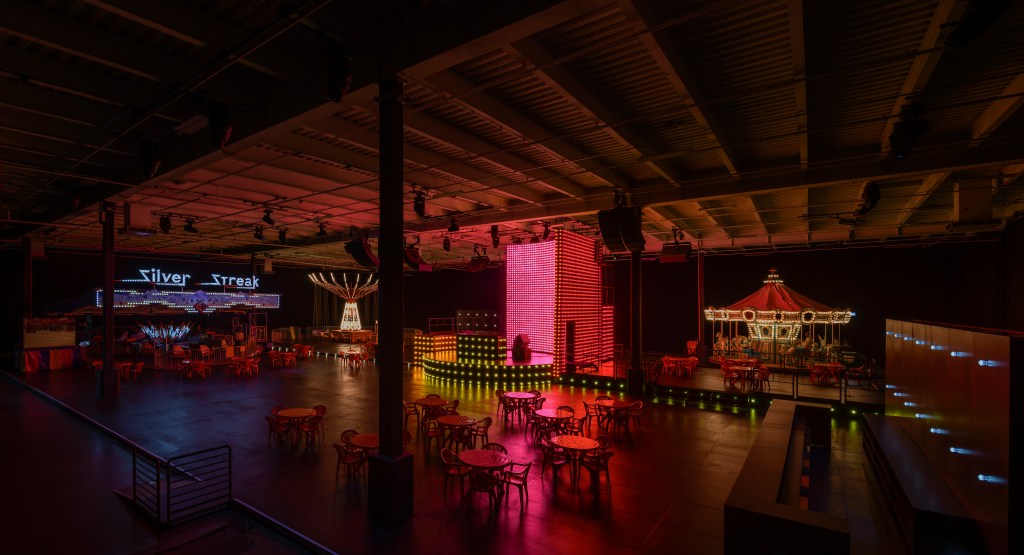PARIS – As it celebrates its 60th anniversary, French luxury goods association Comité Colbert is expanding its reach, with events planned this year in Saudi Arabia and China and a multimedia strategy aimed at attracting young talents to careers in craftsmanship amid a shortage of skilled workers.
In an exclusive interview with WWD, Bénédicte Epinay, chief executive officer of Comité Colbert, detailed the upcoming initiatives, which range from a craftsmanship showcase in Shanghai in November, to coincide with the 50th anniversary of the establishment of diplomatic relations between France and China, to plans for a “MasterChef”-style TV show featuring luxury artisans.
Created in 1954 at the initiative of Jean-Jacques Guerlain, Comité Colbert aimed to rekindle desire for French luxury goods after years of war deprivation. Starting with just 15 members, it now boasts 117, following the addition on Jan. 1 of French sound equipment maker Focal, as well as the Eiffel Tower, a symbol of France.
“I have a waiting list of about 30 houses,” said Epinay, noting the applicants come from areas including fashion, jewelry, fragrances, and wines and spirits.
While the French luxury sector has changed beyond recognition over the last six decades, rival brands continue to work hand-in-hand when it comes to defending their interests on the global stage.
“It’s a sector where brands are outwardly competitive, but in reality, they collaborate a lot,” said Epinay, adding that she marvels at the organization’s ability to ride out drastic industry evolutions.
“Of those 15 founding members, which already included Hermès, Dior, Cartier, Baccarat and Puiforcat, some have gone from small family-run affairs to behemoths, but they remain committed to this collective approach,” she remarked.
Comité Colbert has dedicated working groups, but also informally gathers executives from areas ranging from human resources to corporate social responsibility (CSR) and heritage.
“We all work together on public affairs,” said Epinay, noting that the system is the envy of other countries. “Everywhere I go in the world, it arouses curiosity and admiration.”
A longtime journalist at French newspaper Les Echos, where she launched the luxury supplement Série Limitée, Epinay succeeded Elisabeth Ponsolle des Portes as CEO of Comité Colbert in 2020, just as the coronavirus pandemic went into full swing.
Speaking in her office in Paris in early December, the lively and outspoken executive had just returned from India, where she attended the first-ever luxury symposium organized by the Indo-French Chamber of Commerce & Industry.
“I believe that India is at the stage now that China was between 2005 and 2010 when all the brands were opening stores in Beijing and Shanghai,” she said. “I think it’s the first in a long series of trips that we’ll be taking there.”
While the Indian market presents plenty of opportunity, with luxury brands rushing to open in shopping centers like the recently opened Jio World Plaza mall in Mumbai, it continues to present a number of challenges, such as heavy bureaucracy, she said.
Makers of premium footwear are particularly concerned about the implementation of quality control orders by the Bureau of Indian Standards, designed to boost domestic production and limit imports from China. Some luxury brands are worried that the cost of getting their footwear factories certified could be prohibitive, Epinay said.
With global luxury consumption expected to moderate in 2024, the search for alternative markets has taken on added urgency.
As part of its ongoing outreach efforts, Comité Colbert members plan to travel to Riyadh, Saudi Arabia, in April to meet local authorities and retail operators to explore commercial opportunities.
The event in China is designed as a dialogue between French and Chinese craftsmanship, to be curated by Shang Xia founder Jiang Qiong Er. Due to run from Nov. 1 to 10, it is scheduled to coincide with the China International Import Expo fair, where France will be the guest of honor this year.
Comité Colbert also plans to stage its educational fair “Les de(ux)mains du luxe” outside Paris for the first time, with events planned in Lyon and Cholet, two cities that are home to specialized schools located in regions with strong recruitment needs in fashion, leather goods and jewelry.
“These are our three major sectors that are recruiting and that are struggling to recruit,” Epinay said. “Going forward, we plan to switch every other year between Paris and the rest of the country.”
For the second edition of the annual event, held last month, Comité Colbert partnered with TikTok to launch a challenge aimed at young artisans. The first prize, with a cash endowment of 5,000 euros, went to young embroiderer Yanis Miltgen, whose video described how he incorporates unusual materials such as watch faces into his designs.
Since joining TikTok last year, the luxury association has garnered 27,400 followers. While this remains relatively modest, Epinay points out that many of its members still have little to no presence on the platform. “I was very surprised. Chanel, for instance, has not published anything,” she said.
“We opened the way for a number of our houses to become active on TikTok,” she added, saying that Comité Colbert filmed videos spotlighting different artisans in locations including Chanel’s Le19M craftsmanship hub and École Boulle, a Paris college of fine arts, crafts and applied arts.
Many of these are grouped under the hashtag #savoirfaire, which has garnered 428 million views on TikTok so far, a promising sign for industry officials.
Comité Colbert plans to pursue its social outreach this year, in tandem with plans for a TV show inspired by the success of cooking competitions. A pilot episode was presented to French Culture Minister Rima Abdul Malak and pitched to public broadcaster France Télévisions, which was enthusiastic. “So now, we have to find the financing,” said Epinay.
While sector leaders including LVMH Moët Hennessy Louis Vuitton have flagged a dearth of specialized workers, Comité Colbert has no reliable estimate of current needs. “I have the figures that our member houses give me, but I don’t have figures for tier one, tier two and tier three suppliers,” Epinay explained.
That’s why the organization has launched a comprehensive sector study in partnership with the Culture Ministry, the National Institute of Crafts, the Fondation Bettencourt Schueller and the Terre & Fils endowment fund.
“By the end of 2024, we will have a real snapshot of métiers d’art in France. I’m so pleased, because we’ve been giving rough estimates for a long time, but now we’ll know the real demand by sector and by profile,” she said. “Between a lone feather artisan in the depths of the Auvergne region and Le19M, there’s a huge gap.”
Aside from recruitment, the major challenge facing luxury brands is sustainability. “The road ahead is long, but the good news is that everyone is taking action now,” Epinay said.
Comité Colbert’s third in-depth CSR study, to be published in mid-February as a supplement with The New York Times, will show that 96 percent of luxury brands calculate their Scope Three emissions, while 100 percent have implemented policies to recycle materials and reduce waste, she reported.
“I’m pretty satisfied with the numbers we found,” the executive said. “There are actions being implemented at every stage of the product cycle, so that’s the story we will tell via specific examples.”
Nonetheless, she warned that the sector is broadly unprepared for a raft of new European Union regulations designed to support the bloc’s Strategy for Sustainable and Circular Textiles. “Nobody’s ready. And even if the larger houses might be, their suppliers won’t,” Epinay said.
Comité Colbert has stepped up its lobbying to ensure that the legislation takes into account the specificities of the luxury sector.
“Textile labeling is a topic we’ve been working on for three years and the tests are still not satisfactory. Another regulation that’s been a major focus of our advocacy efforts concerns glass bottles for fragrances and wines,” Epinay said.
She recounted that in an effort to reduce the weight of glass bottles, the European Commission initially suggested that perfume houses all use the same 10 standardized shapes, a prospect considered unimaginable in a sector where bottle designs are strong brand markers. “We are a creative industry, and nobody had thought of that,” she said incredulously.
The battle is far from over. “In Brussels, we are very small in the face of the huge lobbies of fast fashion and green NGOs, so it’s very hard for us to make ourselves heard,” Epinay opined.
Still, she’s confident that there’s strength in unity. Comité Colbert’s 93 French luxury houses, 18 cultural institutions and six European members work in tandem with other national associations under the umbrella of the European Cultural and Creative Industries Alliance, known by the acronym ECCIA.
“Today, some of our members are a million times more powerful than Comité Colbert ever will be. On the other hand, we’re the only ones that can claim to represent French luxury and art of living under a single banner. That is our raison d’être,” Epinay said.



